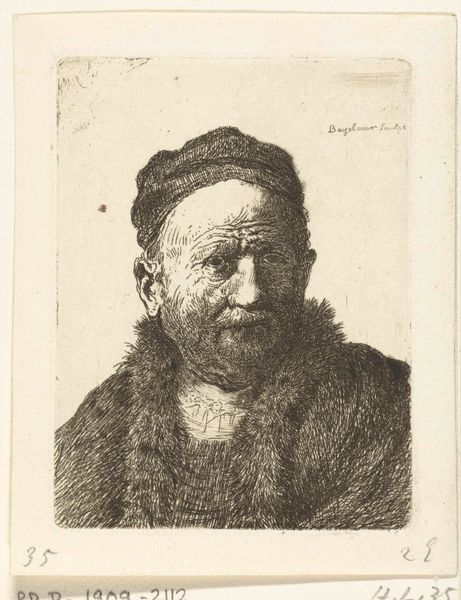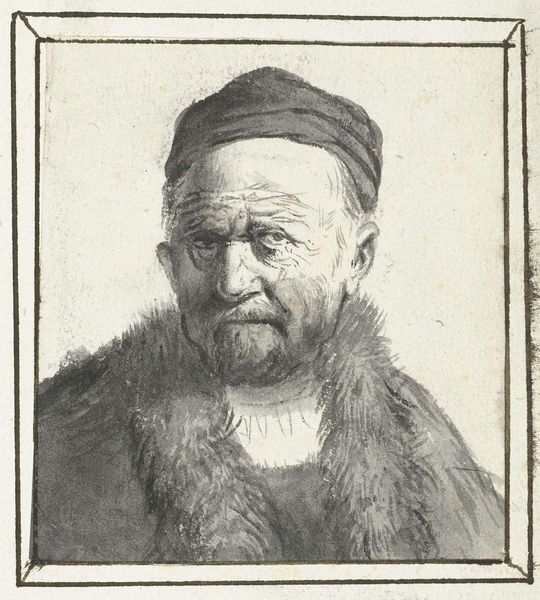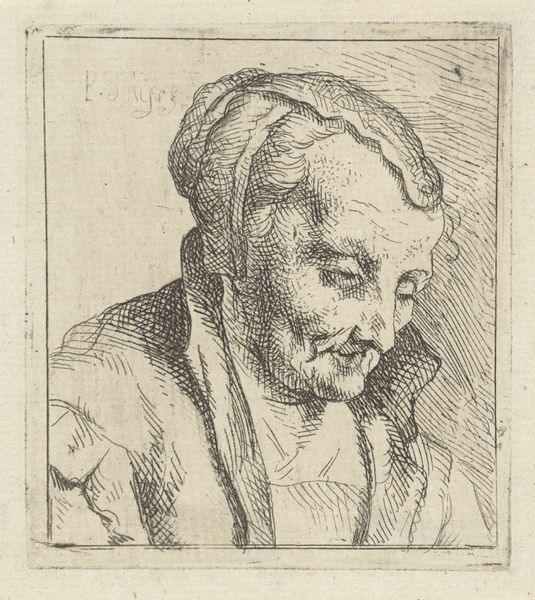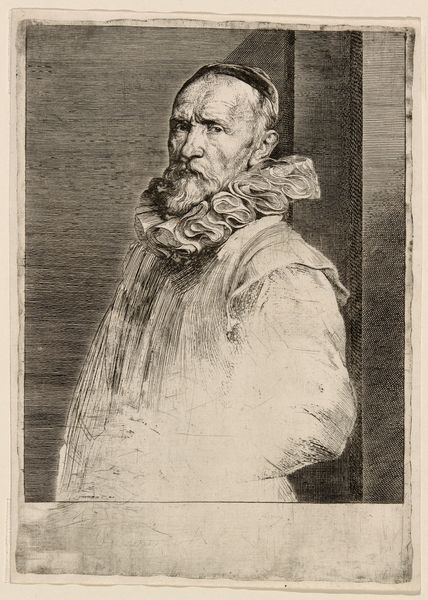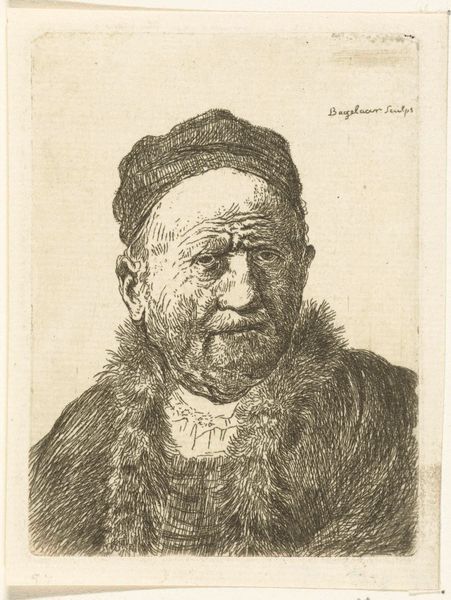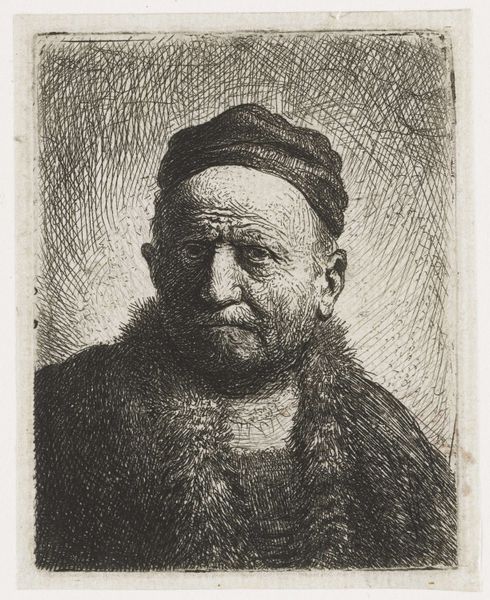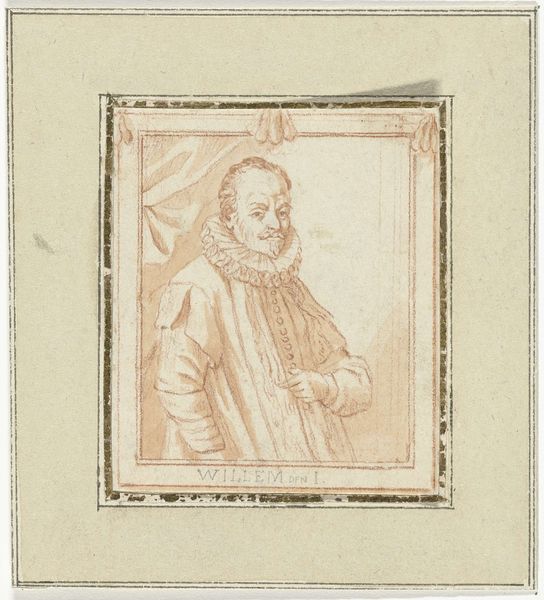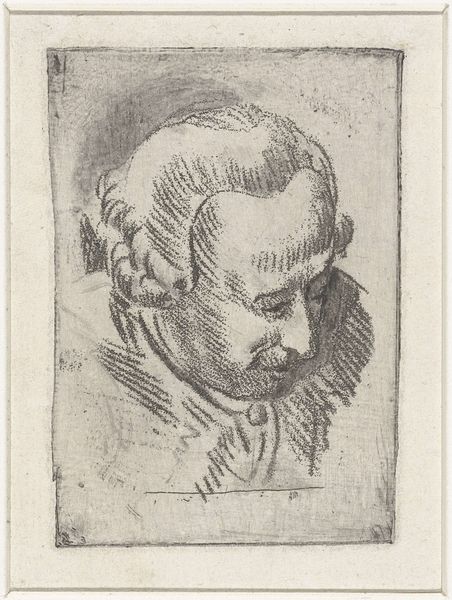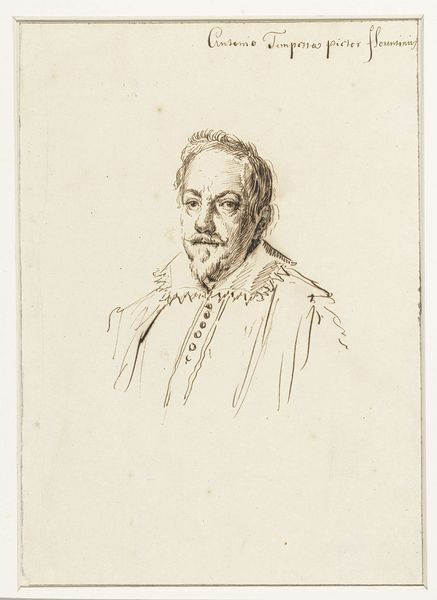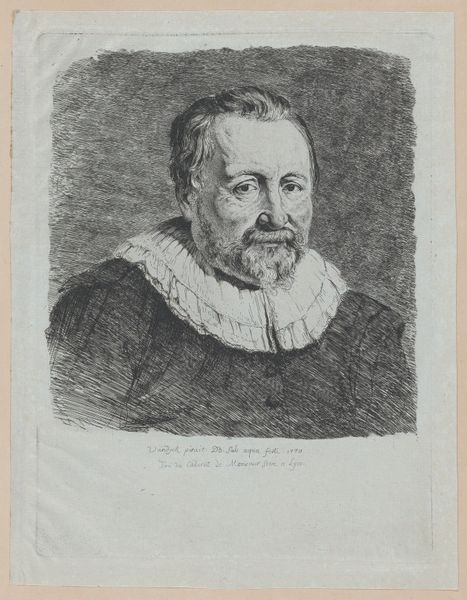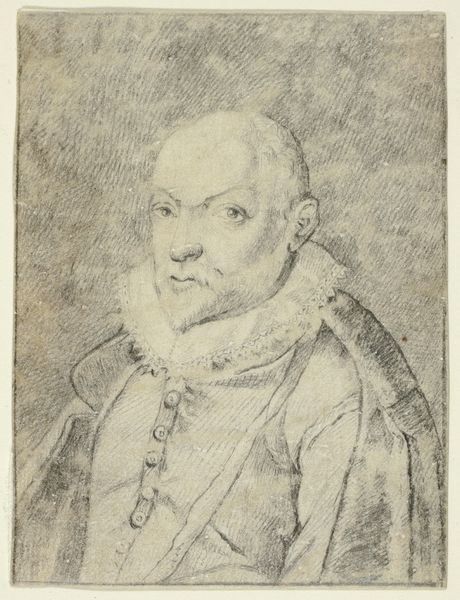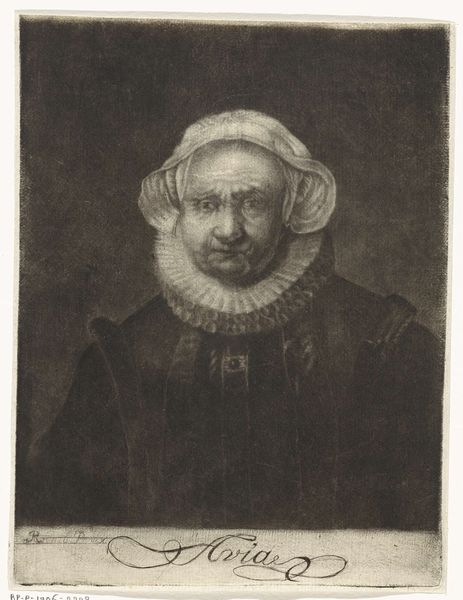
print, etching
#
portrait
#
baroque
# print
#
etching
#
portrait drawing
#
realism
Dimensions: height 67 mm, width 50 mm
Copyright: Rijks Museum: Open Domain
Editor: This etching, "Man wearing a close cap: bust (the artist’s father?)" by Thomas Worlidge, likely made sometime between 1710 and 1766, strikes me with its raw realism. It feels intimate. What stands out to you? Curator: It's fascinating to consider the process here. The choice of etching – think about the laborious act of scoring the plate, the use of acid, the wiping of the ink. The labour inherent in printmaking allows for reproducibility. Was Worlidge making a statement about art’s accessibility in a society increasingly driven by trade and consumerism? Was he thinking about how this medium democratises art? Editor: So, it’s not just the image, but the *making* of the image that we should consider. But did people at the time think of printmaking as, well, *work*? Not as art? Curator: Precisely! The distinction between 'art' and 'craft' was still quite rigid, wasn't it? Worlidge, through this choice of method, is engaging with and maybe even subverting that boundary. This isn’t just a portrait; it’s a document of its own making. The materiality of the ink, the texture of the paper… They all contribute to the final product, as does the socioeconomic context of art consumption in his era. Think of the rising merchant class! Editor: I never really considered prints as such...material objects before, weighed down with meaning. It gives a fresh perspective. Curator: And understanding those layers makes us look closer, doesn't it? Every line in the etching reflects not only the artist's skill, but a complex interaction between art, labor, and society. It pushes beyond a simple likeness. Editor: Definitely! Thanks, I’m going to think about all art processes differently now.
Comments
No comments
Be the first to comment and join the conversation on the ultimate creative platform.
